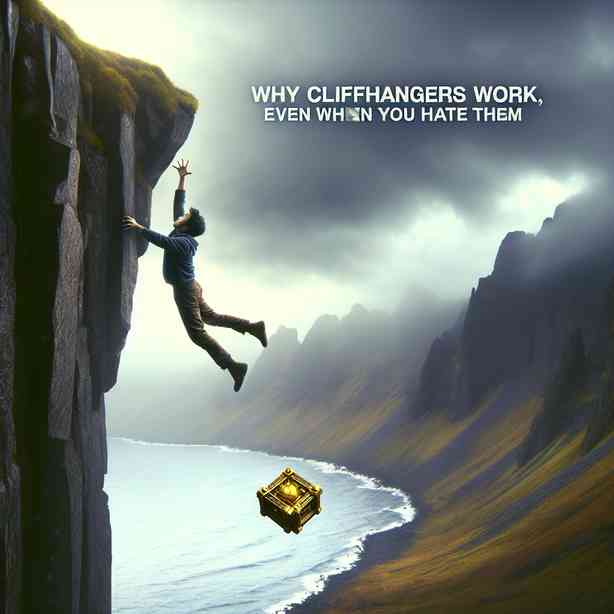
Cliffhangers are a narrative device that has captivated audiences across various forms of media, including literature, television, and films. Despite often causing frustration and impatience among viewers or readers, they possess a unique ability to engage, provoke thought, and create suspense. Understanding what makes cliffhangers work, even when they elicit a sense of annoyance, can be insightful for both creators and audiences alike.
At the core of a cliffhanger lies the concept of unresolved tension. When a story reaches a critical juncture without a clear resolution, it compels the audience to invest further in the narrative. This unresolved tension stimulates the brain’s reward system, creating a psychological urge to seek answers. The anticipation of resolutions can provoke a sense of exhilaration, making the payoff more rewarding when it eventually arrives. This desire for closure is deeply ingrained in human psychology, and cliffhangers exploit this to keep viewers and readers coming back for more.
The effectiveness of a cliffhanger is also rooted in its ability to evoke emotional responses. By placing characters in precarious situations or dilemmas, writers can forge a visceral connection between the audience and the narrative. The emotional stakes become heightened, prompting viewers to care deeply about the characters’ fates. This investment can lead to intense feelings of anxiety or excitement, compelling audiences to eagerly await the next installment. Furthermore, when audiences are emotionally engaged, they are more likely to remember the story and discuss it with others, generating buzz that can drive further interest.
In a storytelling context, successful cliffhangers often rely on well-established plot lines and character development. They work best when audiences have developed a familiarity with the characters and their journeys leading up to the cliffhanger moment. For example, when beloved characters are faced with unexpected challenges, the emotional stakes are raised, piquing audience curiosity about their outcomes. Conversely, if a cliffhanger occurs without sufficient character development or plot buildup, it may feel cheap or unsatisfying, leading to dissatisfaction rather than intrigue.
Moreover, cliffhangers can serve as a powerful tool for thematic exploration. They allow writers to delve into complex themes such as loyalty, betrayal, and sacrifice, prompting audiences to reflect on the narrative’s deeper meanings. For instance, a story that leaves viewers at the edge of their seats regarding a character’s trustworthiness can inspire discussions surrounding morality and ethics within the context of the plot. By thoughtfully incorporating cliffhangers, creators can enhance the thematic richness of their stories while encouraging audiences to engage in critical analysis.
The serialized nature of modern storytelling in TV shows and book series has further amplified the effectiveness of cliffhangers. With the prevalence of binge-watching and instant access to content, creators can strategically employ cliffhangers to maintain momentum across multiple episodes or installments. This format encourages viewers to consume stories rapidly, fostering conversations and speculation about character arcs and plot resolutions. Each episode or chapter ends on a note of suspense, making it difficult for audiences to resist jumping into the next one, and weaving a continuous loop of engagement.
However, it’s also essential to recognize that not all cliffhangers are created equal. When executed poorly or without meaningful context, they can lead to audience backlash. Viewers may feel manipulated if a cliffhanger seems artificially constructed or if it raises questions that the narrative does not adequately explore. This highlights the importance of balance; a well-crafted cliffhanger should stimulate curiosity without sacrificing the integrity of the story or the characters involved.
In conclusion, cliffhangers are a potent storytelling tool that taps into the psychology of human emotion, narrative engagement, and thematic exploration. While they can be frustrating, their effectiveness lies in their ability to create unresolved tension, elicit emotional responses, and foster discussions among audiences. When executed with care and consideration, cliffhangers not only enhance the narrative experience but also forge deeper connections between viewers and the stories they love. Understanding this dynamic can enrich the experience of storytelling for both creators and audiences, fostering an appreciation for the art of suspense and resolution in narratives.


